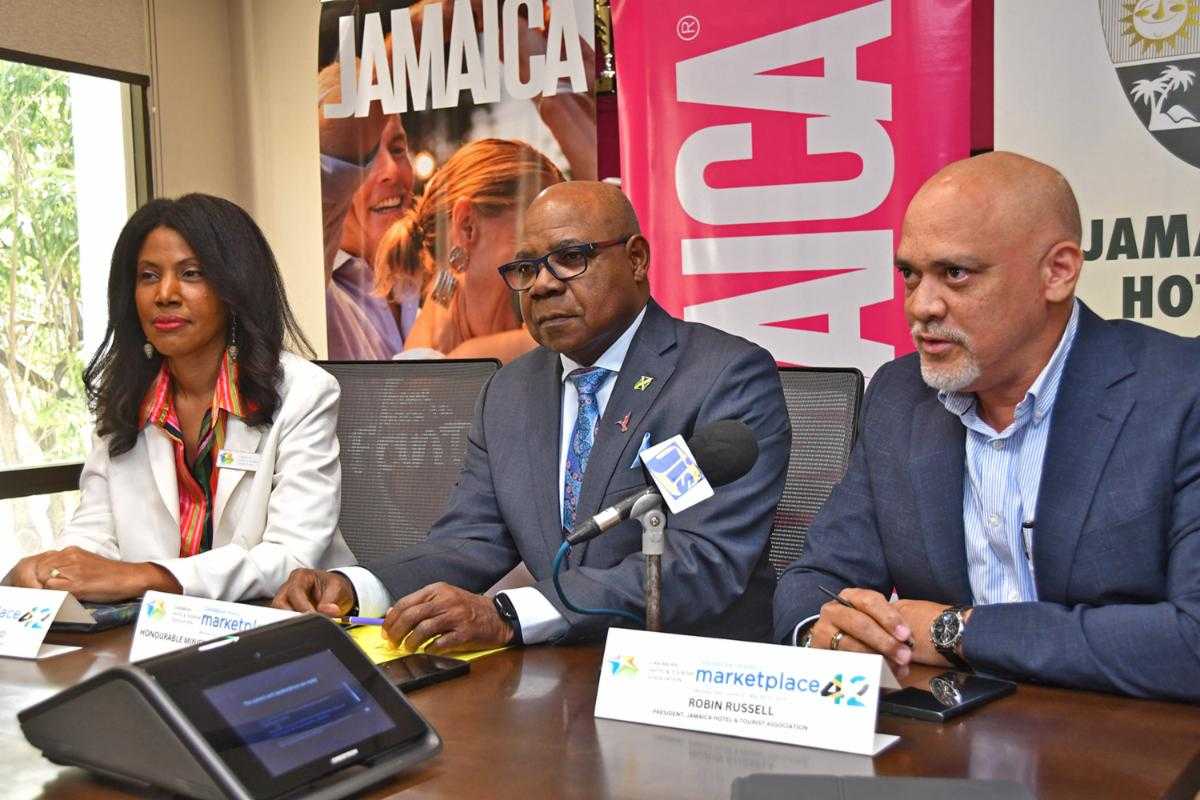BY SIMONE J. SMITH
“The Caribbean Travel Marketplace is not an event in the context of a single activity, but it’s an opportunity, a great opportunity for us as Caribbean people, not just to showcase the strength and power of our assets, but also to provide leadership with innovation.” Edmund Bartlett (Jamaica’s Minister of Tourism)
Welcome to the Caribbean, a paradise on Earth where turquoise waters meet golden sands, and vibrant cultures thrive amidst lush landscapes. Join us on an unforgettable journey through this enchanting archipelago, where every island tells a unique story. The Caribbean is more than just a destination; it’s a collection of experiences, each island offering its own unique charm and adventure. Whether you seek relaxation, history, adventure, or celebration, the Caribbean invites you to discover all that it has to offer.
Over the next six months, the Toronto Caribbean Newspaper will take you on an unforgettable journey around the islands. We’ll give Canadians a chance to experience the unmatched beauty of the Caribbean and those from the Caribbean Diaspora a chance to indulge in everything they have missed back home.
How are we going to be able to do this? Well, we were invited to the 42nd staging of the Caribbean Hotel and Tourism Association (CHTA)’s Caribbean Travel Marketplace, which took place at the Montego Bay Convention Center from May 20th -23rd, 2024.
The Caribbean Travel Marketplace afforded tourism suppliers the opportunity to meet face-to-face with wholesalers from around the world selling Caribbean vacation travel over the course of two days of business meetings. This event stands as the region’s premier platform for: networking, forging partnerships, and showcasing the vibrant offerings of the Caribbean hospitality and tourism sector.
The Caribbean Travel Marketplace is not a typical trade show; the two-day event consisted of pre-scheduled appointments between suppliers and buyers. It was something that I have never experienced before, and something that I am looking forward to sharing with communities across Canada. It consisted of a Caribbean Travel Forum (now in its third year) that focused on the business of tourism in the Caribbean and reflected on visioning a new tourism landscape. Specific topics focused on what is needed to achieve the WTTC economic study projection of a doubling in GDP and an additional 1.34 million jobs by 2032.
Captains of the international and regional travel industry, general managers, private and public sector thought leaders and other officials provided insightful and relevant information to the Caribbean Travel Industry including sharing global and regional travel industry data insight, as well as consumer and travel trends.
Caribbean Travel Marketplace kicked off with the Caribbean Travel Forum on May 20th, focusing on “Visioning a New Tourism Landscape for the Caribbean.” The forum featured an awards luncheon to honour the Caribbean Hotelier of the Year and present Destination Resilience honours and the President’s Award for Excellence in Caribbean Tourism.
They also had a responsible Tourism Day, which coincided with Jamaica’s Labour Day on May 23rd, 2024, and included a focus on addressing climate change, sustainable development, and agricultural linkages to emphasize responsible stewardship of tourism communities.
The best thing about the journey that I am going to take you on; I am going to immerse you in the allure of the beautiful islands of the Caribbean, and we are going to start at the headquarters of the Marketplace in 2024, Jamaica. I am going to offer the opportunity for readers to explore the islands, indulge in adventures, unwind with a spa treatment, groove to the rhythm of its music, and savor the unique flavors of Caribbean cuisine. Whether by the beach, atop a waterfall, or in a lively dancehall, the Caribbean offers a plethora of experiences to enrich your visit!
With all these compelling reasons it’s hard to refute that the Marketplace was a must-attend. From the ability to shake hands and make business deals to exploring and immersing myself in the region, the Marketplace was the place to be for journalists, travel junkies, buyers and sellers of Caribbean travel.
Are you ready? In this edition, we are going to start our journey with Anguilla and the launch of their Summer Campaign, Exclusively Yours, Anguilla. Let’s go!


 Community News2 weeks ago
Community News2 weeks ago
 Community News1 week ago
Community News1 week ago
 Junior Contributors2 weeks ago
Junior Contributors2 weeks ago
 Community News2 weeks ago
Community News2 weeks ago
 Community News1 week ago
Community News1 week ago
 Junior Contributors2 weeks ago
Junior Contributors2 weeks ago
 Community News1 week ago
Community News1 week ago
 Community News1 week ago
Community News1 week ago
























